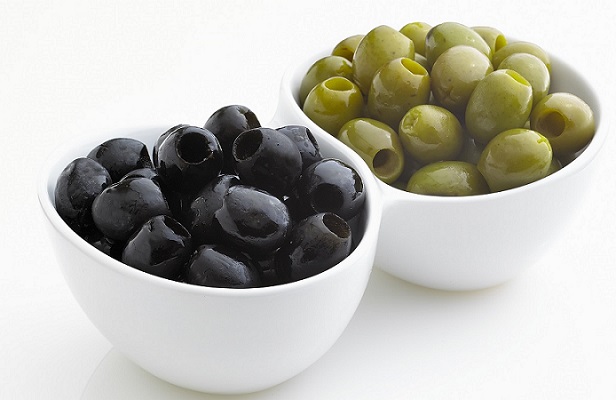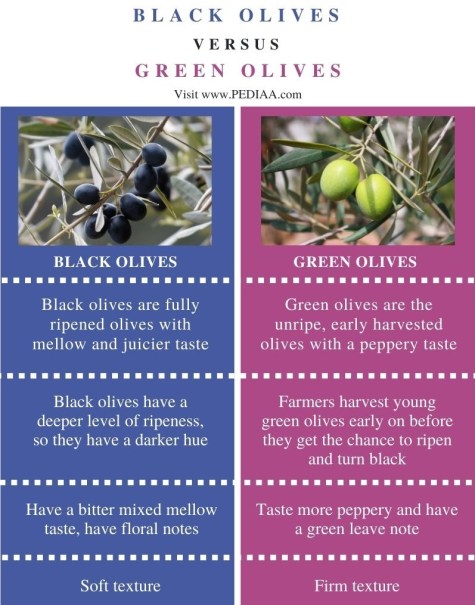Discovering the Difference Between Green and Black Olives
Olives have been cherished throughout history for their rich flavors and health benefits, often serving as a cornerstone of Mediterranean cuisine. Yet, not everyone is aware of what sets green and black olives apart. Let’s delve into the fascinating distinctions between these two popular varieties and the implications of choosing one over the other for your culinary creations.
What Makes Green and Black Olives Different?

At first glance, the most noticeable difference between green and black olives is their color. This variance, however, hints at deeper contrasts in taste, texture, nutritional content, and processing methods. It’s crucial to understand that both green and black olives come from the same tree species, Olea europaea.
The primary distinction lies in their ripeness at harvest. Green olives are picked before they are fully ripened, resulting in their firm, dense texture and a generally more robust, often bitter flavor profile. Black olives, on the other hand, are allowed to mature on the tree, developing a softer texture and a mellower, sometimes sweeter taste.
Processing and Flavor Profiles
The curing process plays a significant role in shaping the distinct characteristics of green and black olives. Both types undergo curing to remove oleuropein, a bitter compound. Common methods include brining, dry curing, and lye processing. Green olives, typically cured in brine or lye, retain a pronounced tang and sometimes a peppery kick. Black olives, often subjected to longer curing times, develop richer, smoother flavors.
These processes also affect the olives’ nutritional attributes. Green olives generally contain slightly higher levels of polyphenols and vitamin E, thanks to their early harvest. Black olives, conversely, offer more iron and are slightly higher in oil content, lending them their luscious texture and taste.
Culinary Uses and Pairings
Green and black olives bring distinct qualities to the kitchen, complementing a range of dishes. Green olives’ firm texture and bold, tangy flavor make them ideal for dishes where a pronounced olive taste is desired. They’re often found in tapenades, alongside cheese and charcuterie, or stuffed with pimentos or garlic as a snack.
Conversely, black olives seamlessly blend into a variety of dishes, offering a more subtle flavor. They’re frequently used in Mediterranean contenders like pizzas and salads, where their smooth taste enhances without overwhelming. For a rich tapenade or sauce, black olives add depth and a touch of sweetness.

Health Benefits
Both green and black olives boast impressive health benefits. Rich in monounsaturated fats, they support heart health and can aid in reducing inflammation. Moreover, they provide essential vitamins and antioxidants. When choosing between green and black, consider their slight nutritional differences: higher polyphenol content in green olives versus higher iron levels in black ones.
Making Your Choice
Deciding between green and black olives often comes down to personal taste preferences and the specific requirements of your recipe. For those who appreciate more assertive flavors and firmer textures, green olives are a perfect match. Lovers of milder, smoother flavors may find black olives more to their liking. Understanding these differences allows you to choose wisely and elevate your culinary endeavors.
In summary, while green and black olives originate from the same tree, their differences in ripeness at harvest, processing, flavor, texture, and nutritional content open a world of culinary possibilities. Whether you prefer green olives’ boldness or black olives’ subtle sweetness, both options offer a delightful fusion of taste and health benefits.













